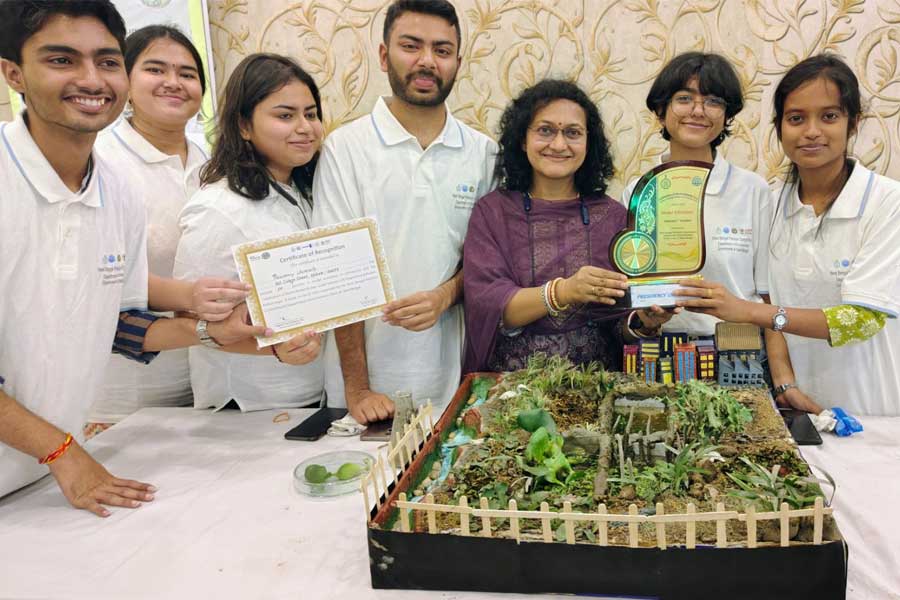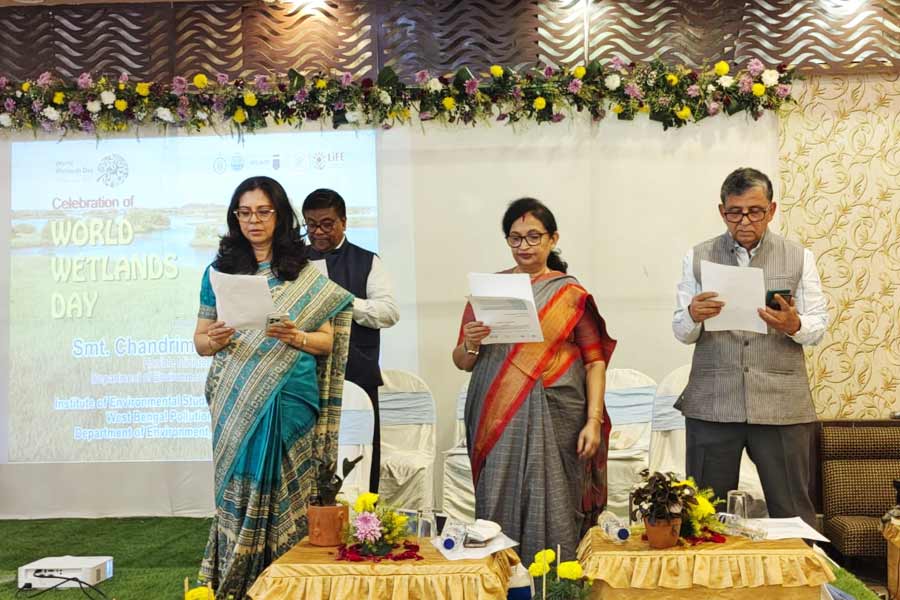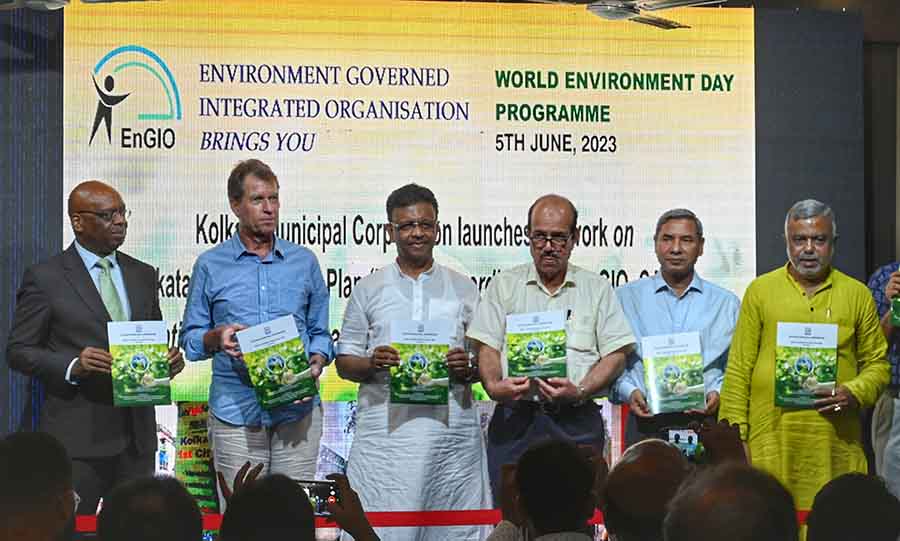The West Bengal government’s ‘Jol Dhoro, Jol Bhoro’ programme has greatly enhanced the quantity of water reserve in the state, West Bengal Pollution Control Board (WBPCB) chairman Kalyan Rudra said on Tuesday.
Uncontrolled extraction of groundwater and filling up of water bodies have led to severe depletion of the ground water-level in Kolkata over the years and thus weakened the load-bearing capacity of the city.
“The ‘Jol Dhoro, Jol Bhoro’ programme, introduced in 2011, has so far contributed towards generating about 460 million cubic metres of water for irrigation; which is roughly two-third of the water being stored in two Damodar Valley Corporation reservoirs after evaporation- and transmission-related water loss,” Rudra told this correspondent on the sidelines of a wetlands meeting being held in the Nalban area off Sector V in Salt Lake. The meeting was organised to celebrate World Wetlands Day, which falls on February 2.
“The ground water-level has nosedived in parts of Kolkata, which is causing the weakening of the load-bearing capacity of the city,” Rudra said. Many environmentalists alleged that this was the main reason behind the tilting of several buildings in the city, one of which recently caved in at Tollygunge during the process of attempted retro-fitting.
“It’s a fact that the Jol Dhoro, Jol Bhoro programme, a pet project of the chief minister, has been a resounding success and we should build upon it,” state environment minister Chandrima Bhattacharya said.
Students shine

The model competition-winning Presidency University team with the model and prizes
The environment minister, who handed over prizes to several schools and colleges that took part in elocution and model-making competitions themed on wetlands, stressed on spreading public awareness, particularly among students, on wetlands.
“We have received participation from 15 major schools and colleges of the city and outskirts and the quality of their work is definitely of the highest order,” said Subrata Ghosh, officer on special duty in WBPCB; which looks after the awareness programme in the state board.
While Presidency University won the Best Wetland Model Award, Beltala Girls School won the best elocution award.
East Kolkata Wetlands under the scanner
Environment secretary Roshni Sen said in the meeting that her department was working hard to stop encroachment in the East Kolkata Wetlands; known as the kidneys of the city, as it naturally filters over 90 million litres of waste water daily through natural purification.
“We are de-silting the bheris so that enough water flows in the canals and fishermen can continue to practise the sewage water-fed fishery here, a hallmark of this wetlands being globally acknowledged,” said Sen; who further pointed out that her department was in the process of preparing a health card for each of the wetlands.
“The quality of natural filtration is so good that we hardly find any contamination, either in fishes or in water, during our routine check-up”, said the official.
Environmentalists also pointed out that violations are rampant in the wetlands. “About 500 police reports are still pending in the East Kolkata Wetlands area; filed only by the East Kolkata Wetlands Authority itself,” a green activist said.

